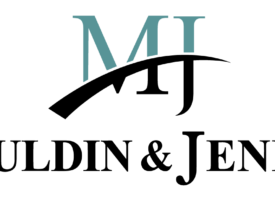For employers of all sizes, choosing an affordable yet fully featured health plan to sponsor for employees isn’t easy. And yet, for most organizations, it’s an imperative.
Under the Affordable Care Act, employers with 50 or more full-time or full-time-equivalent employees must offer a health plan that meets certain standards or face a financial penalty. Organizations with fewer than 50 such employees can choose not to offer health insurance, but most find that a strong benefits package, which includes health coverage, is necessary for attracting and retaining talent.
Whether your organization is choosing a plan for the first time or looking to change its coverage, affordability will no doubt be a concern. However, be careful about picking the cheapest plan without studying the details. Many are inexpensive for a reason. Here are some basic factors to consider when evaluating affordable health coverage.
Fully insured vs. self-funded
A fully insured health plan is one you buy from an insurance company. This is the most common plan for small to midsize employers because it limits your financial risk while offering the most predictable costs.
Alternatively, with a self-funded plan, your organization funds and administers the insurance — often with the help of a third-party administrator. This approach can save money under some circumstances. However, you assume financial risk for the plan and costs can be unpredictable.
Size and structure of network
The size of the plan’s network influences how many options your employees will have when picking their care and how much they’ll pay out of pocket. A smaller network of preferred providers often grants the most coverage with lower out-of-pocket costs for employees when they visit those providers. Participants can typically still pick out-of-network services, but they’ll usually pay more out of pocket. Rightsizing your network is critical to participant satisfaction.
Tax-advantaged accounts
Although technically not insurance, Health Savings Accounts (HSAs), which must be offered in conjunction with a high-deductible health plan, and Flexible Spending Accounts (FSAs) can be strong additions to a benefits package.
HSAs and FSAs let employees set aside pretax dollars from their paychecks to use for eligible medical expenses. HSA funds remain in your account until you use them, while FSA dollars typically must be spent within the year or lost (though a plan can provide for a grace period of up to 2½ months after the end of the plan year). A third option is a Health Reimbursement Arrangement (HRA). This is an employer-funded plan under which participants submit out-of-pocket medical expenses, such as deductibles or copays, for tax-free reimbursement.
Government assistance
If your organization happens to be considered a small business for health insurance purposes, you may want to check out the Small Business Health Options Program (SHOP). This federal marketplace is designed for small-business owners looking for health care plans. To qualify, a company typically must:
- Have one to 50 employees,
- Provide health benefits to all staffers working 30 or more hours per week,
- Reach plan enrollment of at least 70% of employees, and
- Maintain an office or have an employee in the state of the SHOP used.
Every state runs its own SHOP marketplace, but they’re similar.
What you really need
Before you choose or switch coverage, it’s a good idea to survey your staff to determine which health plan features they most value. You also might want to engage an insurance broker to help you shop for a plan that best suits your needs and budget. Contact us for help assessing the costs and tax impact of any employer-sponsored benefit.
© 2023


